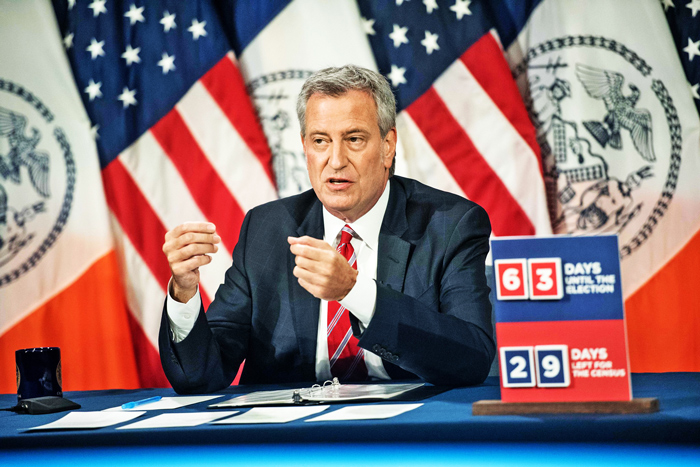Photo Courtesy of Michael Appleton/Mayoral Photography Office
“Reform goes beyond just changing policies. It means improving transparency, increasing accountability, and ensuringcommunity engagement is centered in ourapproach,” Mayor de Blasio said.
By Forum Staff
The City plans to fulfill the Obama Foundation pledge to address use of force in policing, Mayor Bill de Blasio announced Monday.
De Blasio took the pledge in June, which included a commitment to review police use of force policies, engage communities by including a diverse range of input, report the findings of the review, and reform police use of force policies. The mayor said his plan focuses primarily on areas that have a critical impact on use of force: community, transparency and accountability.
The plan to fulfill the pledge builds off NYPD reforms that have already been instituted, including:
- Distributing body-worn-cameras to all officers
- Overhauling use-of-force policies, publishing an annual comprehensive report, and creating a Force Investigation Division
- Instituting new implicit bias, de-escalation and crisis intervention team training
- Publishing annual data on discipline, increasing penalties and requiring counseling for officers involved in DWI incidents, domestic violence incidents, and requiring mandatory dismissal for repeat offenders
- Publishing the trial calendar on the NYPD website
- Instituting Precision Policing, which focuses enforcement on the relative few that drive crime in this city, while allowing the NYPD to continue reducing its enforcement footprint by tens of thousands of arrests and summonses each year and at the same time driving crime to historic lows.
Key plan elements include:
- Bring the community in: incorporate community members into the instruction of classes and panel discussions at the Police Academy
- Involve the community in developing key policies and strategy: establish formal committees of community members to assist in developing crime prevention, policing strategies, and NYPD policies
- Public input: involve the public in developing and evaluating key policies and initiatives by inviting public comment
- Community feedback: gather and incorporate community feedback through regular surveys
- Expanded use of CompStat: introduce a broader range of indicators in CompStat, such as measuring the relationship with the community
- Diversity in the Department: continue to build and support a more diverse workforce by understanding barriers through robust engagement, and creating recommendations to address them
- Operationalizing transparency: add interactive dashboards and other data visualizations of metrics, such as information about Department diversity and Department composition by race, gender, age, and other demographic information
- Accountability: release an NYPD disciplinary matrix, which will promote fairness, transparency and accountability for officers and promote trust with the public.
“We’ve shown we can change this city these past nearly seven years. Now we are showing it again. Reform goes beyond just changing policies. It means improving transparency, increasing accountability, and ensuringcommunity engagement is centered in ourapproach,” de Blasio said.
“Over the past nearly seven years, our NYPD officers have worked tirelessly to carry out a series of cutting edge reforms, all geared toward increasing fairness, impartiality and accountability in policing and to deepen our ties with those we serve in every New York City neighborhood. Our work to deepen these critical efforts across all aspects of the NYPD continues,” Police Commissioner Dermot Shea added.

